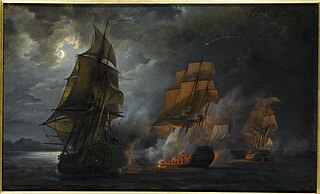American Revolutionary War
South Carolina's first naval actions of the American Revolutionary War occurred in July 1775, when the province's Council of Safety hired two captains to assist Georgia in the capture of British ships carrying arms and gunpowder. [1] That month the council also hired a ship, Commerce, for the purpose of acquiring gunpowder that the British had stored at Nassau in the Bahamas. She was outfitted for this purpose, but word of the anticipated arrival of British ships carrying arms and gunpowder at Savannah, Georgia prompted her to be used to capture those ships instead. These activities netted the colonial cause more than 25,000 pounds of gunpowder. [2] In October 1775, the council acquired the schooner Defence, and hired Simon Tufts as her captain. After she had a brief exchange with British ships in Charleston harbor in November, the provincial congress voted to seize Prosper to assist in driving the British ships away, and established a commission to oversee naval affairs. [3]

The Kingdom of Great Britain, officially called simply Great Britain, was a sovereign state in western Europe from 1 May 1707 to 31 December 1800. The state came into being following the Treaty of Union in 1706, ratified by the Acts of Union 1707, which united the kingdoms of England and Scotland to form a single kingdom encompassing the whole island of Great Britain and its outlying islands, with the exception of the Isle of Man and the Channel Islands. The unitary state was governed by a single parliament and government that was based in Westminster. The former kingdoms had been in personal union since James VI of Scotland became King of England and King of Ireland in 1603 following the death of Elizabeth I, bringing about the "Union of the Crowns". After the accession of George I to the throne of Great Britain in 1714, the kingdom was in a personal union with the Electorate of Hanover.
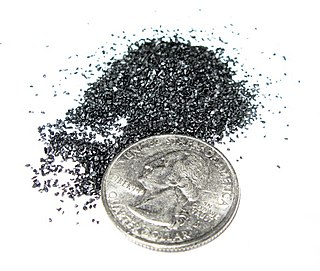
Gunpowder, also known as black powder to distinguish it from modern smokeless powder, is the earliest known chemical explosive. It consists of a mixture of sulfur (S), charcoal (C), and potassium nitrate (saltpeter, KNO3). The sulfur and charcoal act as fuels while the saltpeter is an oxidizer. Because of its incendiary properties and the amount of heat and gas volume that it generates, gunpowder has been widely used as a propellant in firearms, artillery, rockets, and fireworks, and as a blasting powder in quarrying, mining, and road building.

Nassau is the capital and commercial centre of the Commonwealth of the Bahamas. The city has an estimated population of 274,400 as of 2016, just over 70% of the population of the country (≈391,000). Lynden Pindling International Airport, the major airport for the Bahamas, is located about 16 kilometres (9.9 mi) west of Nassau city centre, and has daily flights to major cities in Canada, the Caribbean, the United Kingdom and the United States. The city is located on the island of New Providence, which functions much like a business district. Nassau is the site of the House of Assembly and various judicial departments and was considered historically to be a stronghold of pirates. The city was named in honour of William III of England, Prince of Orange-Nassau, deriving its name from Nassau, Germany.
In December, a third ship, Comet, was added to the fleet, and the council sent Robert Cochran to recruit experienced seamen in Massachusetts. As Boston was at the time under siege by George Washington's newly formed Continental Army, Massachusetts authorized him to recruit up to 300 men, provided he offered moderate wages so as to not compete with local needs.

Massachusetts, officially the Commonwealth of Massachusetts, is the most populous state in the New England region of the northeastern United States. It borders on the Atlantic Ocean to the east, the states of Connecticut and Rhode Island to the south, New Hampshire and Vermont to the north, and New York to the west. The state is named after the Massachusett tribe, which once inhabited the east side of the area, and is one of the original thirteen states. The capital of Massachusetts is Boston, which is also the most populous city in New England. Over 80% of Massachusetts's population lives in the Greater Boston metropolitan area, a region influential upon American history, academia, and industry. Originally dependent on agriculture, fishing and trade, Massachusetts was transformed into a manufacturing center during the Industrial Revolution. During the 20th century, Massachusetts's economy shifted from manufacturing to services. Modern Massachusetts is a global leader in biotechnology, engineering, higher education, finance, and maritime trade.
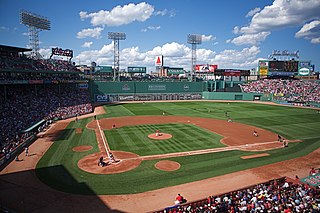
Boston is the capital and most populous city of the Commonwealth of Massachusetts in the United States. The city proper covers 48 square miles (124 km2) with an estimated population of 685,094 in 2017, making it also the most populous city in New England. Boston is the seat of Suffolk County as well, although the county government was disbanded on July 1, 1999. The city is the economic and cultural anchor of a substantially larger metropolitan area known as Greater Boston, a metropolitan statistical area (MSA) home to a census-estimated 4.8 million people in 2016 and ranking as the tenth-largest such area in the country. As a combined statistical area (CSA), this wider commuting region is home to some 8.2 million people, making it the sixth-largest in the United States.
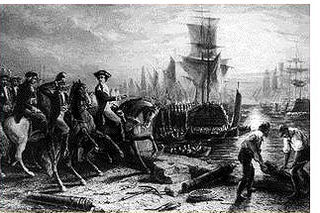
The Siege of Boston was the opening phase of the American Revolutionary War. New England militiamen prevented the movement by land of the British Army, which was garrisoned in what was then the peninsular city of Boston, Massachusetts. Both sides had to deal with resource supply and personnel issues over the course of the siege. British resupply and reinforcement activities were limited to sea access. After eleven months of the siege, the British abandoned Boston by sailing to Nova Scotia.
The provincial congress in early 1776 authorized committees in other provincial ports to acquire ships and men for local defense, and fixed pay scales and ranks for state land and naval forces. In March 1776 the schooner Peggy entered the state service. In the following months the congress, now operating under a new constitution, passed laws establishing admiralty courts and providing for the appointment of ship captains. Captains were to be chosen by the legislature, with commissions issued by the state president. On October 8 the legislature established a Board of Naval Commissioners to oversee the state's naval affairs, including the purchase, outfitting, and manning of ships, and the management of its shipyards. This organizational structure survived until February 1780, when the state legislature repealed all previously-established laws respecting the naval establishment.
Throughout 1777 and 1778 the state acquired property for shipyards, and brought more ships into service. This included the Paul Pritchard Shipyard at Mount Pleasant, South Carolina. [4] This activity picked up pace when the British captured Savannah late in 1778, bringing the war closer to the state. When it became clear the British were going to make a second attempt on Charleston in 1780, the state procured additional ships, and the naval defense of Charleston was passed to Continental Navy captain Abraham Whipple. Most of the state's ships were lost during the Siege of Charleston, and only a few small ships were commissioned after the tide of battle turned against the British in 1781. One ship that survived the loss of Charleston was the frigate South Carolina, which was at sea at the time.
Paul Pritchard Shipyard, also known as State Shipyard, Rose's Shipyard, and Begbie & Manson's Shipyard, is a historic shipyard site located at Mount Pleasant, Charleston County, South Carolina. The shipyard was in operation as early as 1702, and was the site of an attack made during the French and Spanish invasion of 1706. It was acquired by Paul Pritchard and sold to the commissioners of the South Carolina Navy in 1778, and was South Carolina's only state shipyard. It was sold back to Pritchard after the American Revolutionary War, who with his son operated it until 1831.

Mount Pleasant is a large suburban town in Charleston County, South Carolina, United States. It is the fourth largest municipality and largest town in South Carolina, and for several years was one of the state's fastest-growing areas, doubling in population between 1990 and 2000. The population was 67,843 at the 2010 census,. The estimated population in 2014 was 77,796. At the foot of the Arthur Ravenel Bridge is Patriots Point, a naval and maritime museum, home to the World War II aircraft carrier USS Yorktown, which is now a museum ship. The Ravenel Bridge, an eight-lane highway that was completed in 2005, spans the Cooper River and links Mount Pleasant with the city of Charleston.
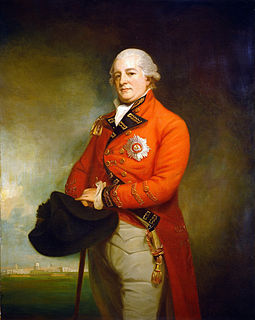
The Capture of Savannah, or sometimes the First Battle of Savannah, was an American Revolutionary War battle fought on December 29, 1778 pitting local American Patriot militia and Continental Army units, holding the city, against a British invasion force under the command of Lieutenant Colonel Archibald Campbell. The British seizure of the city led to an extended occupation and was the opening move in the British southern strategy to regain control of the rebellious Southern provinces by appealing to the relatively strong Loyalist sentiment there.
Commodore Alexander Gillon had procured South Carolina in Europe, the state having ordered her in March 1778. [5] Previously named Indien, she was chartered from the Chevalier de Luxembourg for a three-year period. The charter agreement provided that prize money was to be divided between the officers and crew (½), South Carolina (¼), and the Chevalier Luxembourg (¼). On her way from Europe to South Carolina she captured several prizes, and she participated in the 1782 capturing of the Bahamas with the Spanish fleet. She was captured in December 1782, and the financial terms Gillon agreed to concerning prize distribution and indemnification of the Chevalier de Luxembourg for its loss bedeviled the state's finances for years.
Alexander Gillon was an American merchant and seaman from Charleston, South Carolina. He represented South Carolina in the U.S. House in 1793 and 1794.

Indien (1778), often L'Indien, was a frigate built for the U.S. Commissioners in France — Benjamin Franklin, Silas Deane, and Arthur Lee — to a design by the French naval architect Jacques Boux. She was laid down early in 1777 by a private shipyard in Amsterdam and launched in February 1778. Apparently she was built with the scantlings and lines of a small 74-gun Third Rate ship of the line but was a frigate in construction. In 1780 the Duke of Luxembourg chartered her to the navy of South Carolina and she sailed as South Carolina.
Prize money has a distinct meaning in warfare, especially naval warfare, where it was a monetary reward paid out under prize law to the crew of a ship for capturing or sinking an enemy vessel. The claims for the bounty are usually heard in a Prize Court.
Additionally, the Navy included frigates, Rattlesnake, Bricole, and Truite (26), the brigs Notre Dame (16), and Comet; also General Moultrie (20). Bricole, Truite, Notre Dame and General Moultrie all participated in the defense of Charleston in early 1780.
Bricole was a flûte built by Jean-Joseph Ginoux and launched around April 19, 1764. In September 1779 she sank in the Savannah River but was refloated. The next month the French ceded her to the South Carolina government. The South Carolinians wanted to convert her to a frigate of 44 guns, but then gave up the idea and made her a floating battery instead. As such she was armed with fourteen 12-pounder guns on her lower deck and twenty-two 8-pounder guns on her upper deck. In March 1780 she was sunk in front of Charleston, South Carolina to impede the entry of British naval vessels. [6]
Truite was a French vessel built to plans by Jean-Joseph Ginoux and built and launched at Le Havre on May 9, 1777. The French transferred her to the South Carolina Navy in December 1779. By March 1780 she was a frigate of 26 guns. She was sunk in the Copper River to prevent a British squadron from sailing up the river. [7]


















